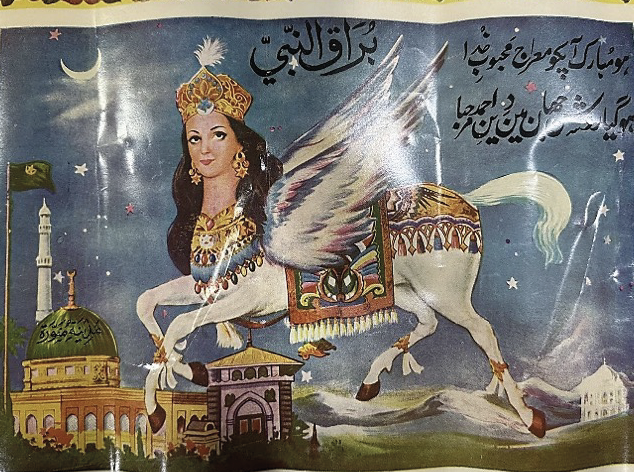Muslim Women in the Modern World: Identity, Voice, and Adaptation
DOI:
https://doi.org/10.69598/decorativeartsjournal.4.34-57Keywords:
Muslim women, Cultural identity, Globalization, Islamic art, ReligiousAbstract
This qualitative research aims to examine the status and roles of Muslim women in contemporary society by analyzing their rights, duties, and attributes based on Islamic principles, which significantly influence the construction of identity and daily life practices. The study employs an arts-based research approach combined with cultural content analysis to explore how art functions as a medium for expressing the ideas of Muslim women concerning religion, culture, and identity.
Findings reveal that in the context of globalization, Muslim women face challenges in balancing religious values with sociocultural transformations. Art becomes a vital tool for negotiating identity through diverse representations of Muslim women in both religious and social dimensions. This study addresses a research gap by highlighting the lack of in-depth analysis on the use of art as a cultural space for Muslim women, particularly in contexts of conflict and change. The analysis is framed by Feminism, Post-colonial Feminism, and Visual Culture theories to explain the mechanisms through which Muslim women negotiate gender and religious identity via contemporary art. The research not only reflects the transformation within Muslim societies but also demonstrates the potential of art as a communicative platform and a space for creating new meanings in the modern era.
References
ทวิลักษณ์ พราภชม. (2563). “พร้อม” ที่จะ “ถูกมองเห็น”: การสวมฮิญาบของผู้หญิงมุสลิมในจังหวัดชายแดนภาคใต้ของประเทศไทย. วารสารเอเชียด้านสังคมศาสตร์และมนุษยศาสตร์, 26(1), 3-42.
ทิพย์สุดา รังสิมนตราภี. (2562). อัตลักษณ์ของฮิญาบและอิสลามโฟเบียในสังคมฝรั่งเศส. วารสารเศรษฐกิจการเมืองบูรพา, 6(2), 1–33.
เพ็ญจันทร์ ประดับมุข เชอเรอร์. (2566). ประสบการณ์ความทุกข์ทรมานของแรงงานข้ามชาติและความอยุติธรรมด้านสุขภาพ. วารสารการศึกษาสหวิทยาการ, 23(1), 141–155.
วิทูร เศวตวิธี. (2563). การส่งเสริมสุขภาวะผ่านแนวทางของศาสดาอิสลาม. วารสารศิลปศาสตร์ มหาวิทยาลัยรังสิต, 15(2), 65–78.
วิลาสินี สุขกา, กาญจนา มนัสสวัส, และมนตรี อาภรณ์. (2562). การปรับตัวทางวัฒนธรรมของนักศึกษามุสลิมจากสามจังหวัดชายแดนภาคใต้ในจังหวัดสงขลา: กรณีศึกษานักศึกษาชมรมมุสลิม มหาวิทยาลัยเทคโนโลยีราชมงคลศรีวิชัย. รายงานการวิจัย, คณะศิลปศาสตร์ มหาวิทยาลัยเทคโนโลยีราชมงคลศรีวิชัย.
สุธาสินี วรรณกร. (2566). ฮาลาล : อัตลักษณ์แห่งศรัทธาและความงามในบริบทของผู้ไม่ใช่มุสลิม [ปริญญานิพนธ์ปริญญาตรี]. มหาวิทยาลัยศิลปากร.
Alex Nabaum Illustration: Refugee’ Path. (2017). Alex Nabaum Illustration: Refugee’ Path [Online image]. (https://www.theispot.com/whatsnew/2017/12/alex-nabaum-illustration-refugees-path.htm).An article detailing programs.
Durkheim, E. (1951). Suicide: A study in sociology (J. Spauding & G. Simpson, Trans.). Free Press. (Original work published 1897)
Islamic Arts Magazine. (2011). Shirin Neshat, Iranian Visual Artist [Online image].
https://islamicartsmagazine.com/magazine/view/shirin_neshat_iranian_visual_artist/
Lathrop, P.M. (2021). Lalla Essaydi [Online image]. https://awarewomenartists.com/en/artiste/lalla-essaydi/
Neshat S. (n.d.). Shirin Neshat [Online image]. https://nr.world/shirin-neshat/

Downloads
Published
How to Cite
Issue
Section
Categories
License
Copyright (c) 2025 DEC Journal

This work is licensed under a Creative Commons Attribution-NonCommercial-NoDerivatives 4.0 International License.
Published by Academic Affairs Division, Faculty of Decorative Arts, Silpakorn University. The copyright of the article belongs to the article owner. Published articles represent the views of the authors. The editorial board does not necessarily agree with and is not responsible for the content of such articles.


